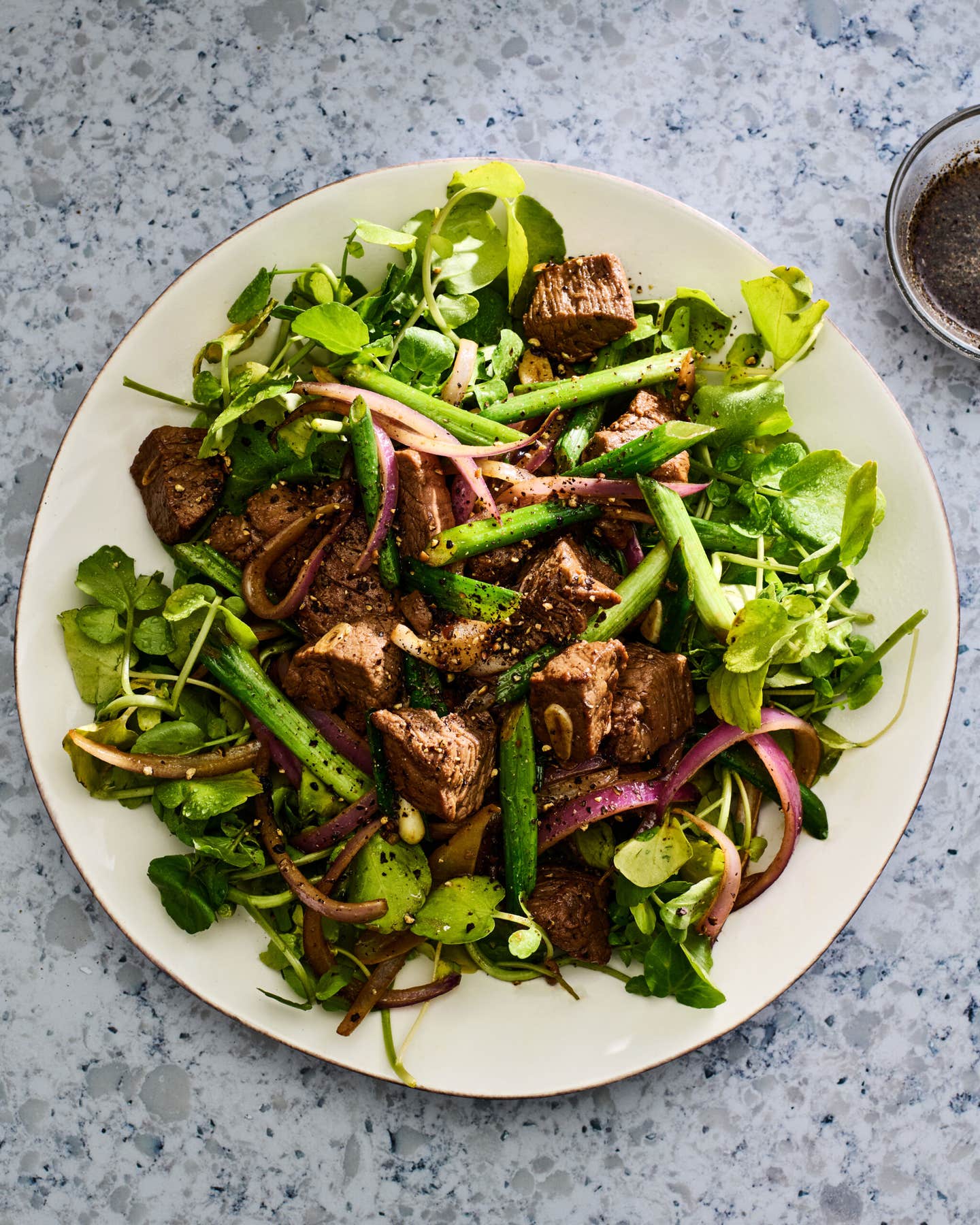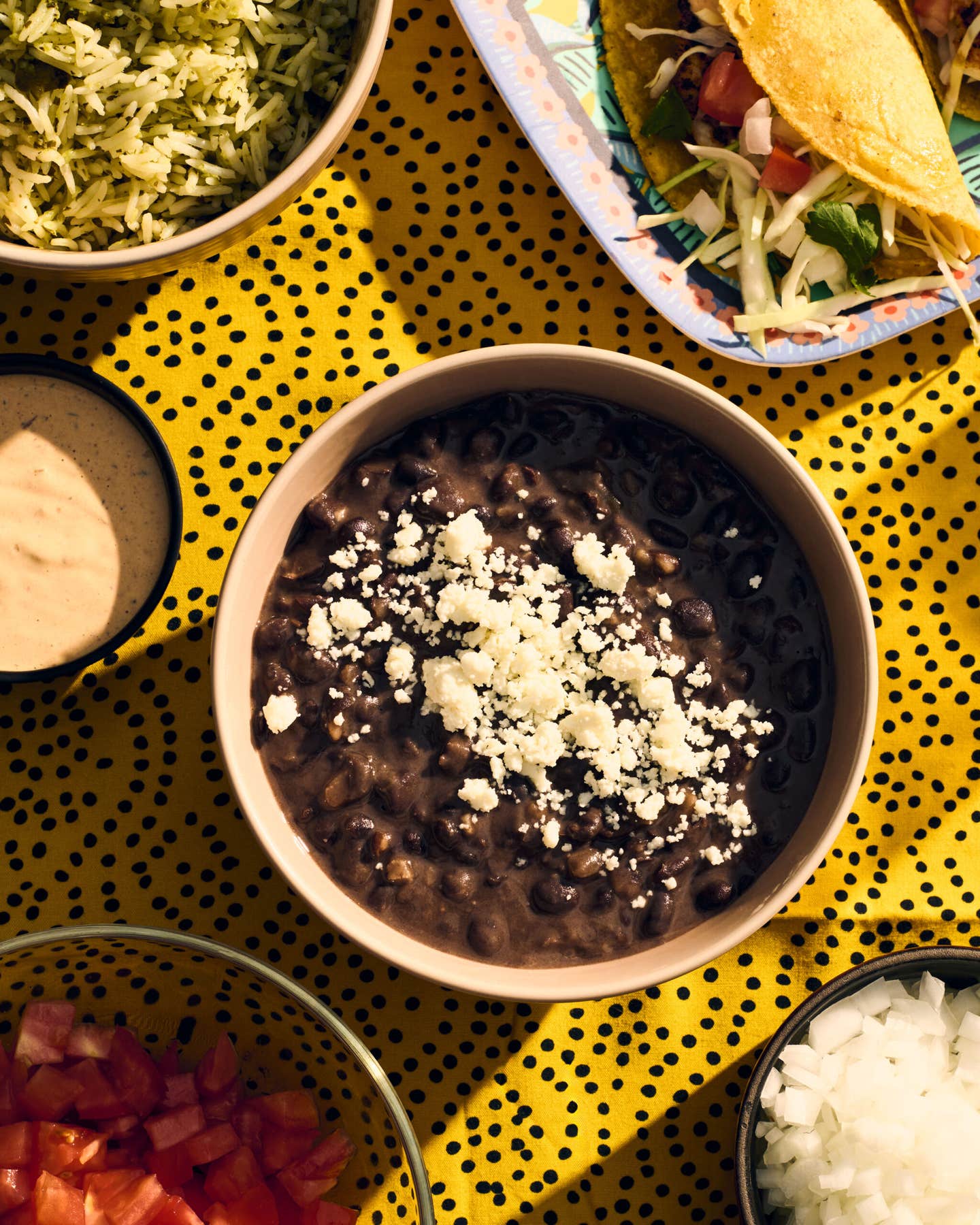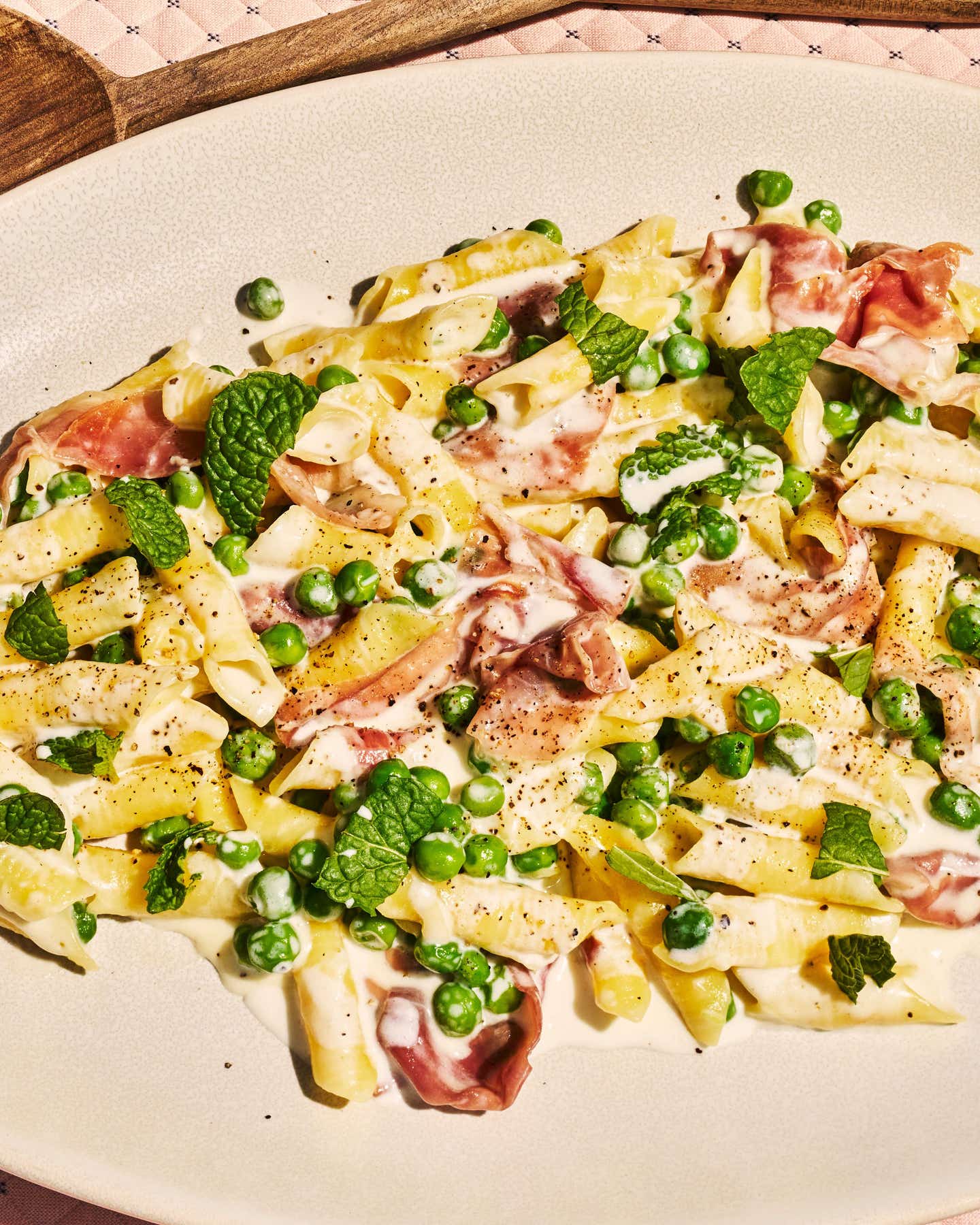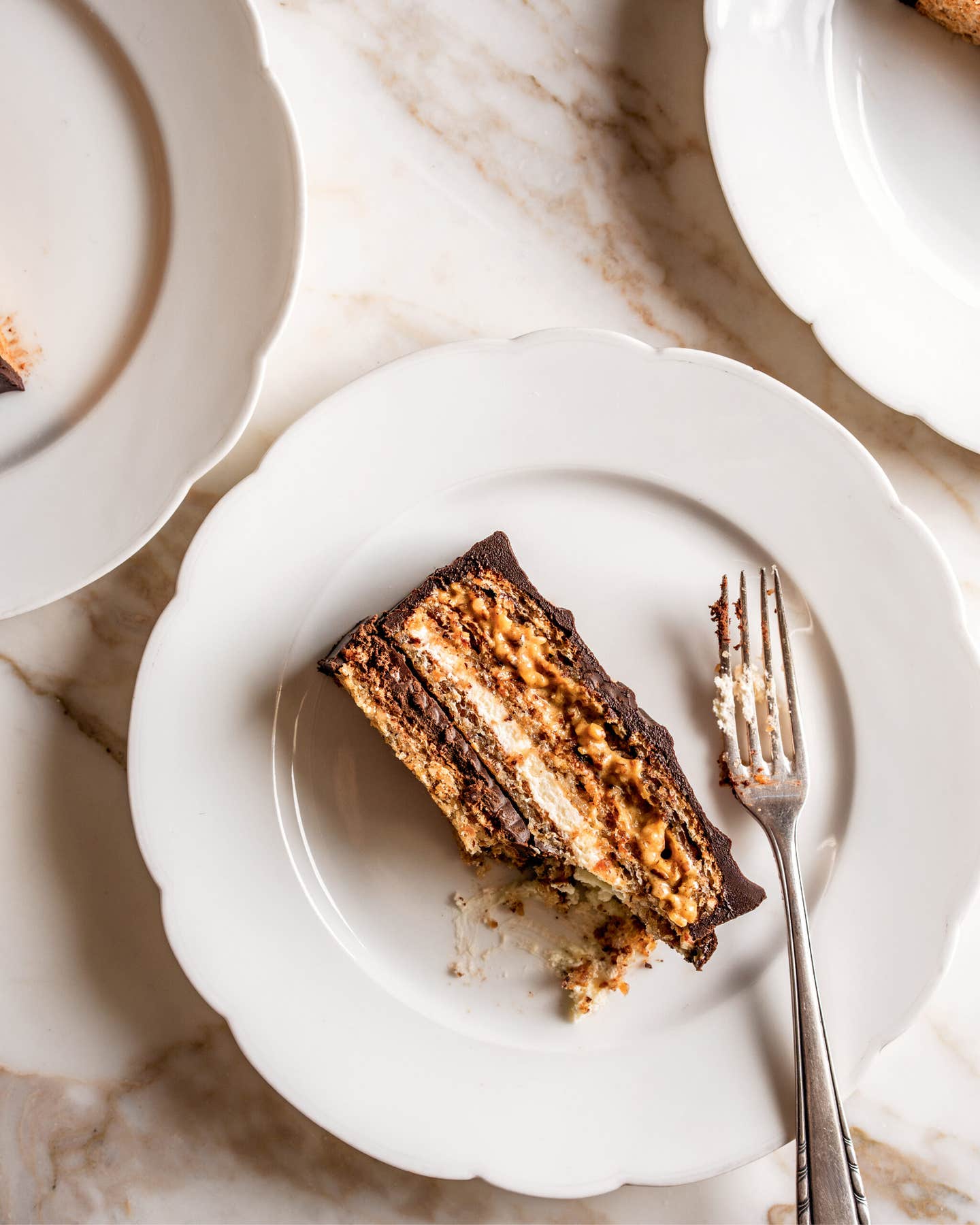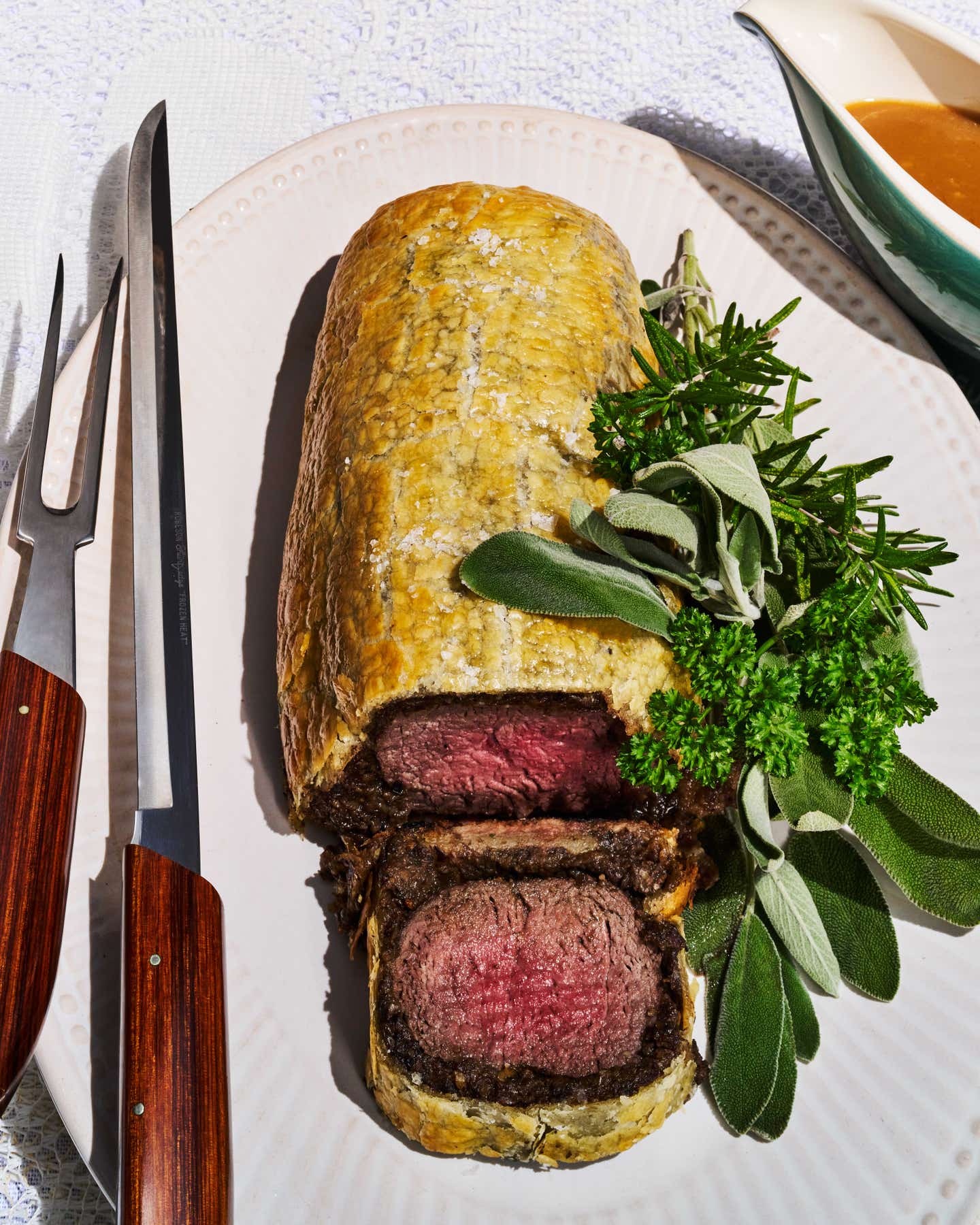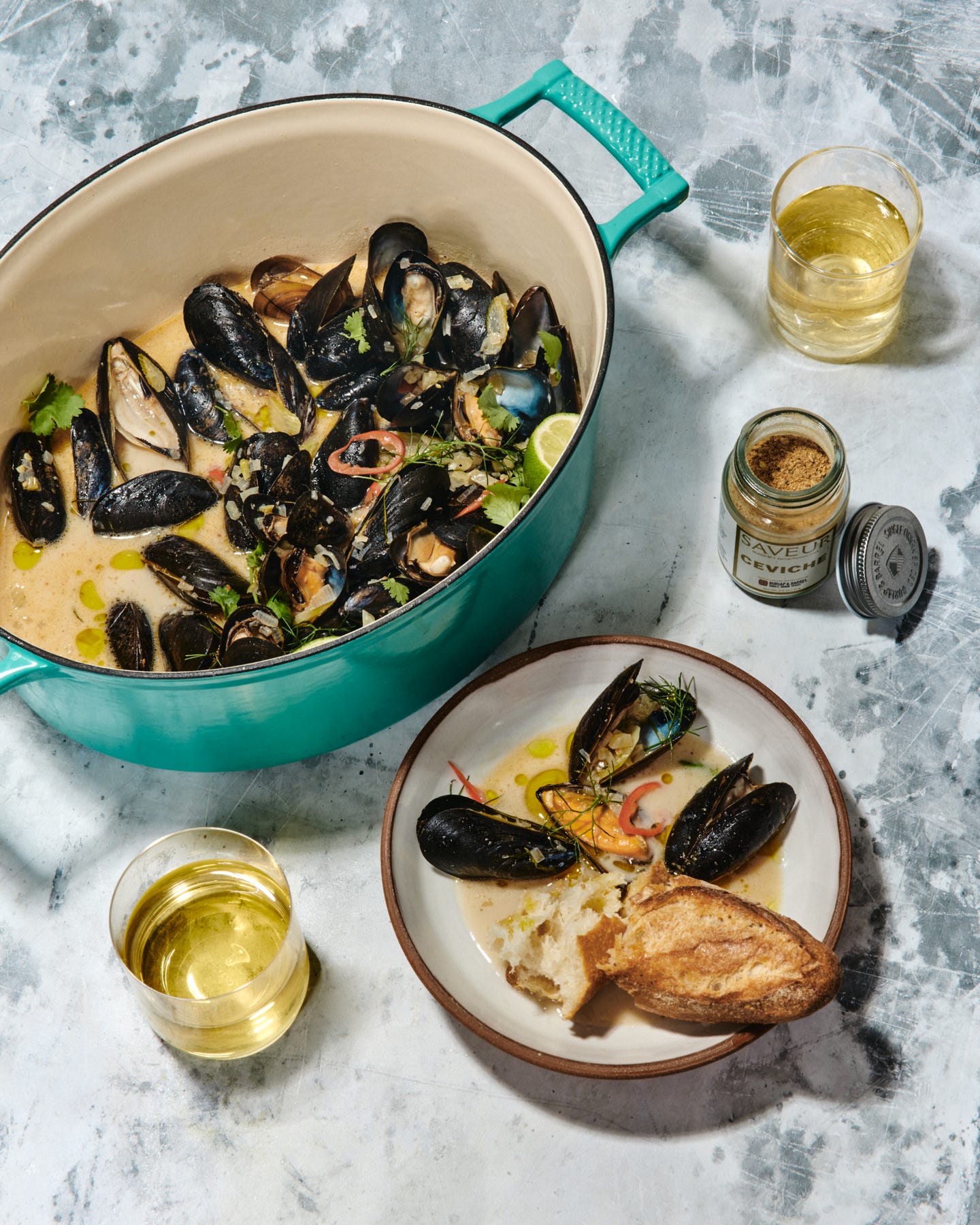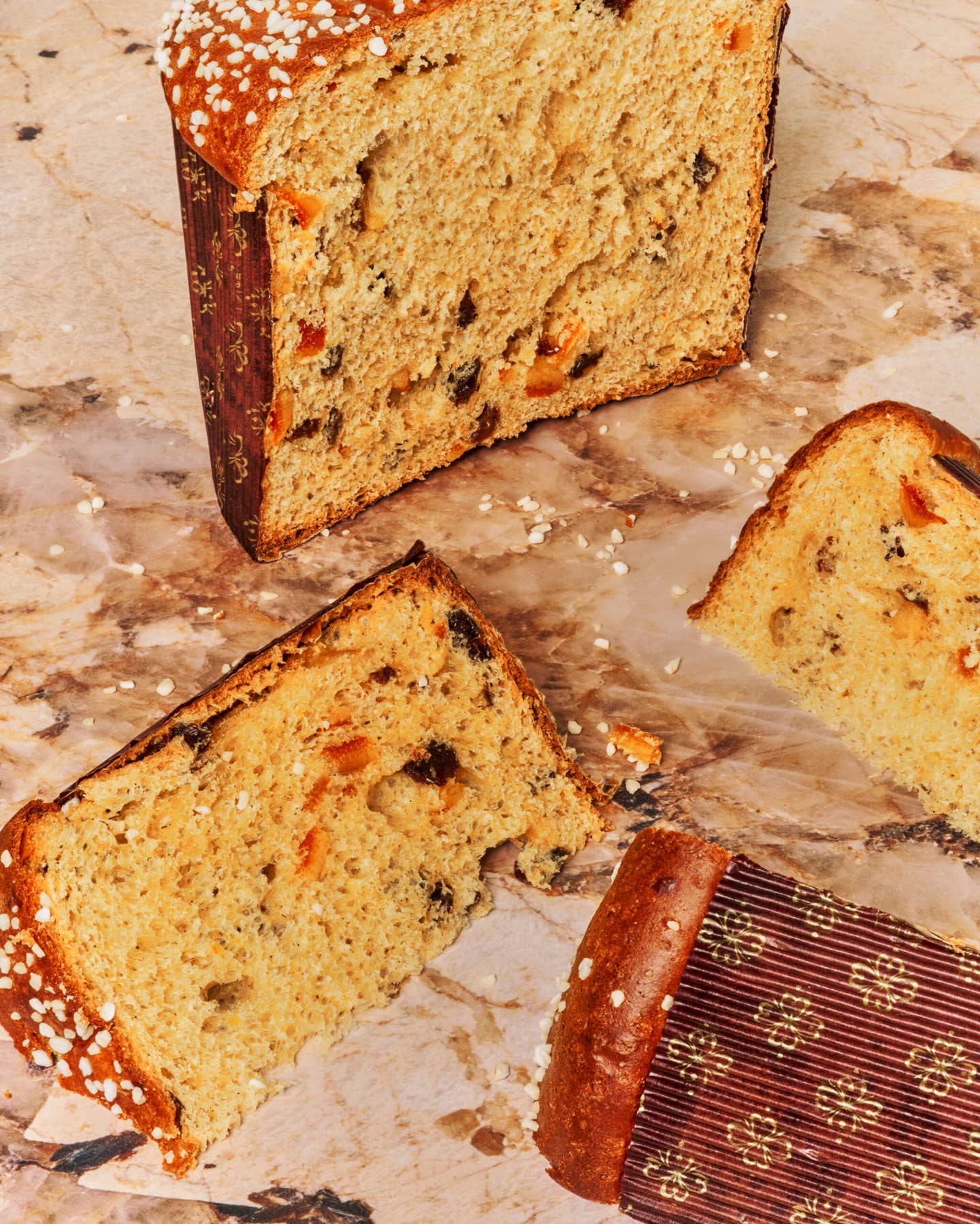Italy’s Most Delicious Steak, on a Weeknight at Home
An exercise in simplicity, eating the unpretentious Tuscan bistecca alla Fiorentina is a profound experience
- Serves
serves 2
- Time
45 minutes
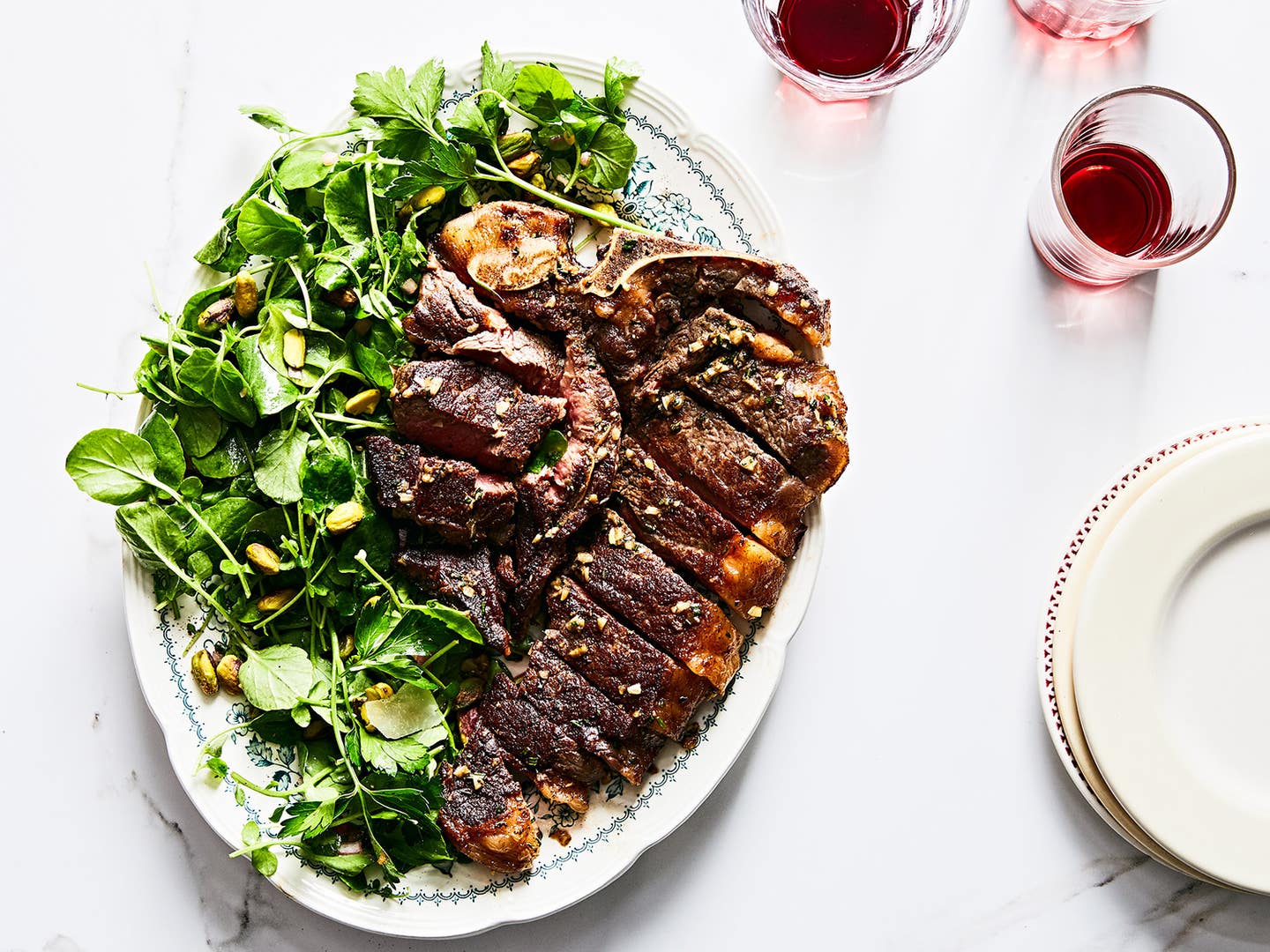
In America, steakhouse culture is increasingly one in which the cooks are rewarded for going big and brash. There are flashes of fire. Streaks of grease. And hulking butter-topped cuts bubbling under the broiler. But to make an incredible steak, less can often be more. Such is the philosophy surrounding bistecca alla Fiorentina, the famous bone-in steak of Tuscany, Italy.
To say you don't need to travel to Italy to have a great steak would be an understatement. First, most regions in Italy barely offer beef on the menu. And even where they do, you'll almost never see a restaurant serve an individual cut of steak to an individual diner. Steaks are more often served family-style, and many dishes forego steak in favor of ground meat, organs, or lean cuts braised until tender.
While farmers in an abundance of regions may have traditionally kept a small herd of cattle for farm work and fertilization, it is mostly the breeds of the north—largely from Piemonte and Tuscany—that give steak any status in Italy. One of the most sought after by locals and visitors alike is bistecca alla Fiorentina, the simple, Florentine-style T-bone or porterhouse steak hard-seared on the outside and cooked to a ruby-red rare on the inside. Some chefs are so rigid about its simplicity that they don't even season the meat before it goes on the grill, only slicking it with a little olive oil, often some rosemary, and a shower of sea salt after it comes off the fire.
Usually rather enormous, a few inches thick, and two-plus pounds, bistecca in Tuscany has long been made from the Chianina, a robust and flavorful breed of cows that has been raised in this region as well as Umbria and Lazio since the mid-19th century. The horned gray cows are named for Tuscany’s Val di Chiana (or Valdichiana), which lies between the plains of Orvieto and Arezzo. But, maybe even more than the breed used, the cut of steak and the fact that it’s aged for at least two weeks have become the most distinguishing characteristics of the bistecca. Most often a porterhouse, it is a bone-in, T-bone-style cut that includes both a hefty piece of the top loin well as a tenderloin, separated by a bone and surrounded by a layer of pristine white fat.
When replicating a bistecca alla Fiorentina at home, you can cook the steak over a charcoal or wood fire, and to great results. But I find it equally satisfying and, actually, easier on the stovetop, where steady, high heat and a cast-iron skillet allow you to sear the steak to an impressive browned crust—sometimes one more even than you’d get on a grill—while retaining its juicy red center. Being in the kitchen also allows you to keep your seasonings even closer at hand, ready for slathering on the meat just as it comes off the heat.
While everyone seems to debate the proper seasonings for bistecca, you can’t go wrong with the trifecta of salt, oil, and rosemary used by many of the local cooks. I like to take the seasoning up an easy but powerful notch by adding raw garlic and smashed, oil-packed anchovies to the mix. Both are seasonings used widely in Tuscany, and—though not always included in the quintessential bistecca preparation—they provide a complexity of flavor that truly makes for one of the best steaks I know how to cook.
Here’s how to knock the homemade version out of the park.
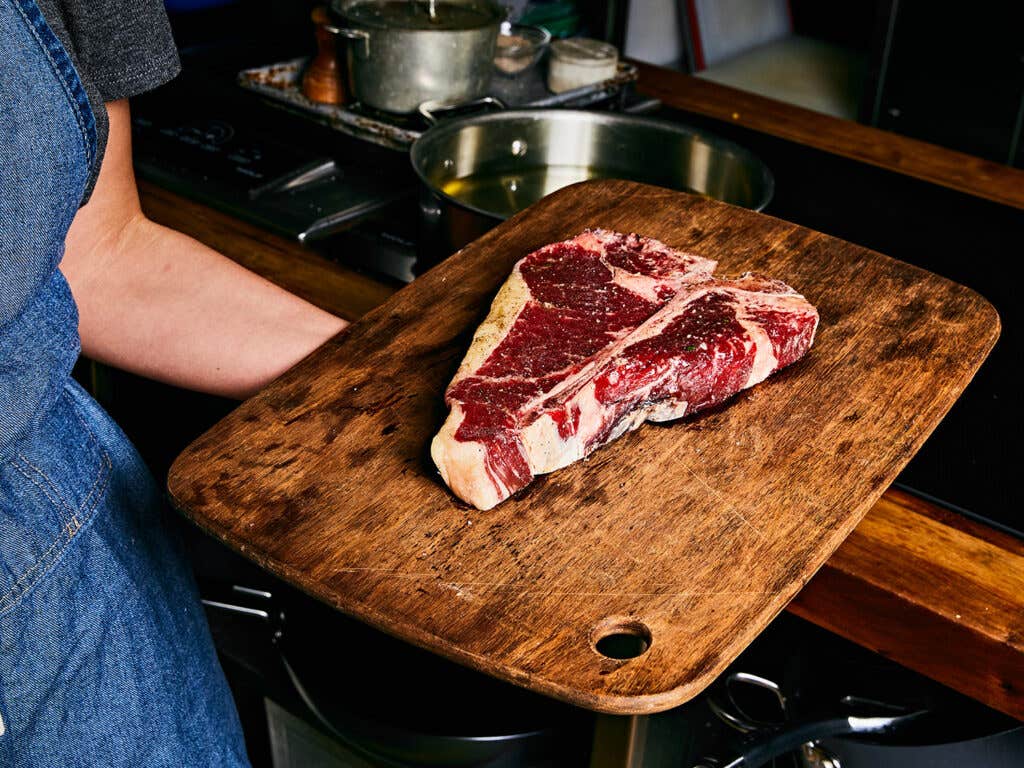
Mind the Size
In Italy, bistecca alla Fiorentina is usually a dish to share. You can split it between two, but often—especially among the mix of courses including antipasti and primi—you’ll see bistecca shared among a few. My version of the dish, meant to be more manageable in size for an everyday meal or just a duo of diners, uses just one and a half pounds of meat and bone total and is around one inch thick or slightly more—which cuts down on the cooking time and doesn’t require the use of the oven to finish cooking the interior. If you do opt for a larger, thicker cut, give the steak a few extra minutes in the pan to guarantee a good ratio of sear to center.
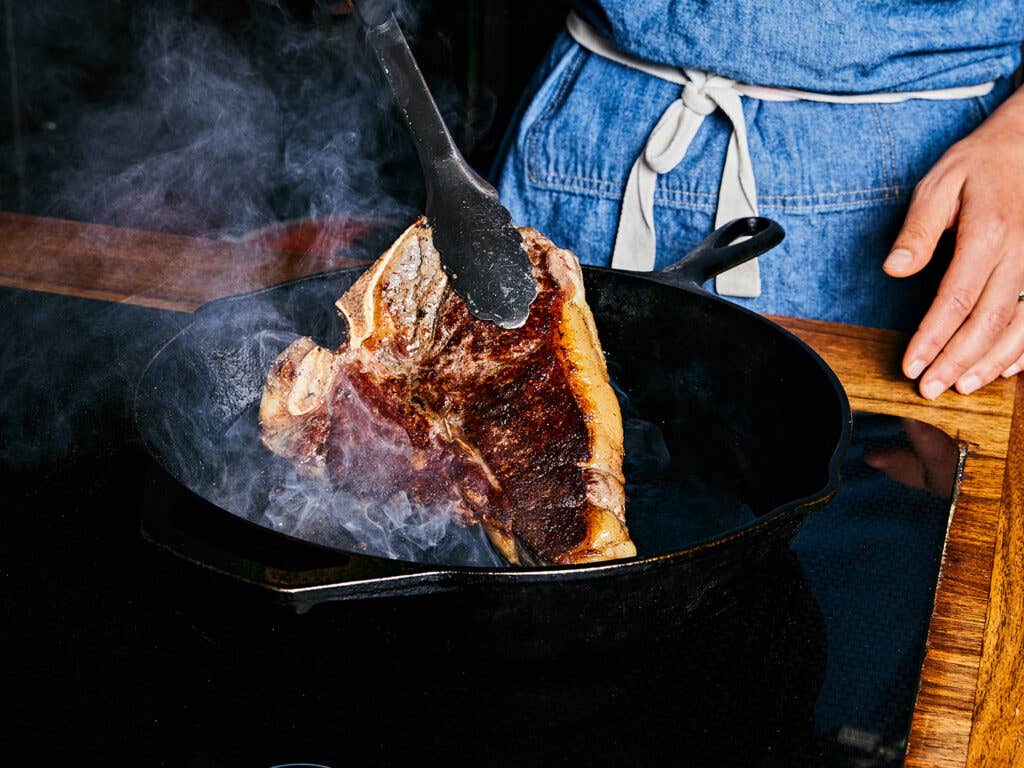
Give It a Hard Sear
Applying a balanced but intense heat is everything when it comes to achieving the proper crusty exterior on bistecca. You want a thick skillet that can retain heat extremely well, such as cast iron, and to get it smoking hot just before adding the steak. Bringing the meat to room temperature before you begin cooking will also help keep the pan from cooling down when the two come in contact, and resisting shifting or moving the steak while it is cooking will help you create a deeper, more even sear.
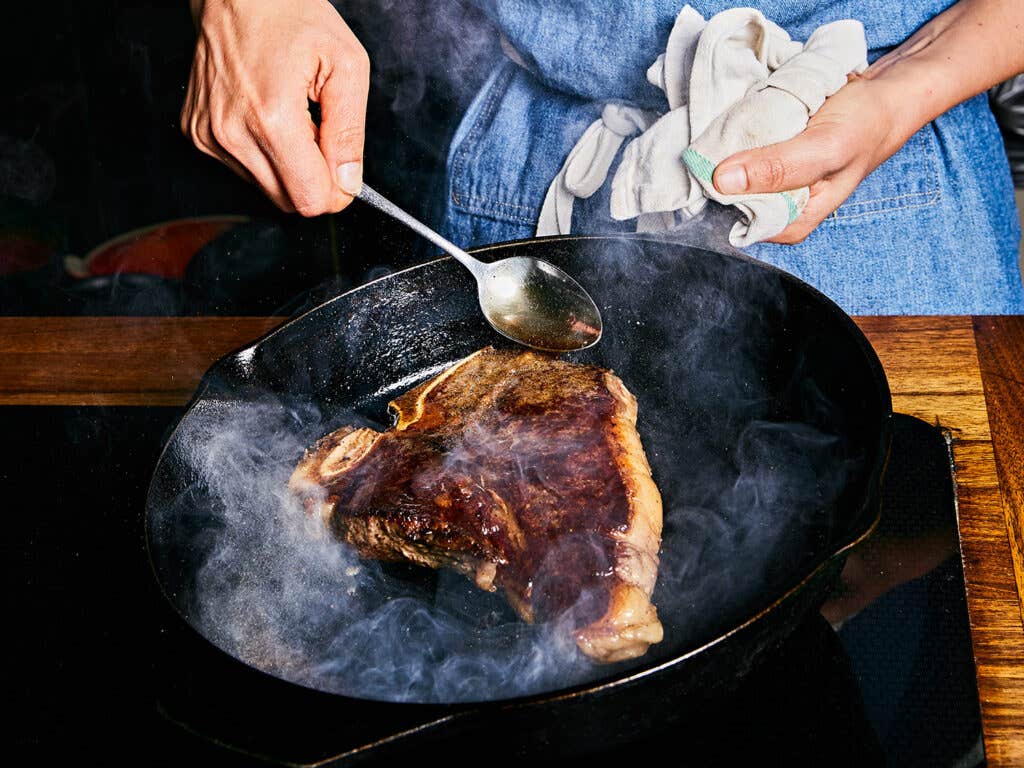
Tilt and Baste
Once the steak is seared and flipped, you can baste it with hot fat from the pan if needed to brown any lighter patches. Using a kitchen towel or oven mitt if desired, tilt the skillet slightly to pool the fat and juices to one side. Then, using a large spoon, scoop up some of the fat from the pan and run it over the top of the light patches repeatedly. When in doubt, sear and baste the steak more rather than less: It’s very difficult to burn a steak of this size in a pan (in other words, don’t be afraid), and a bistecca without the proper char just isn’t the same.
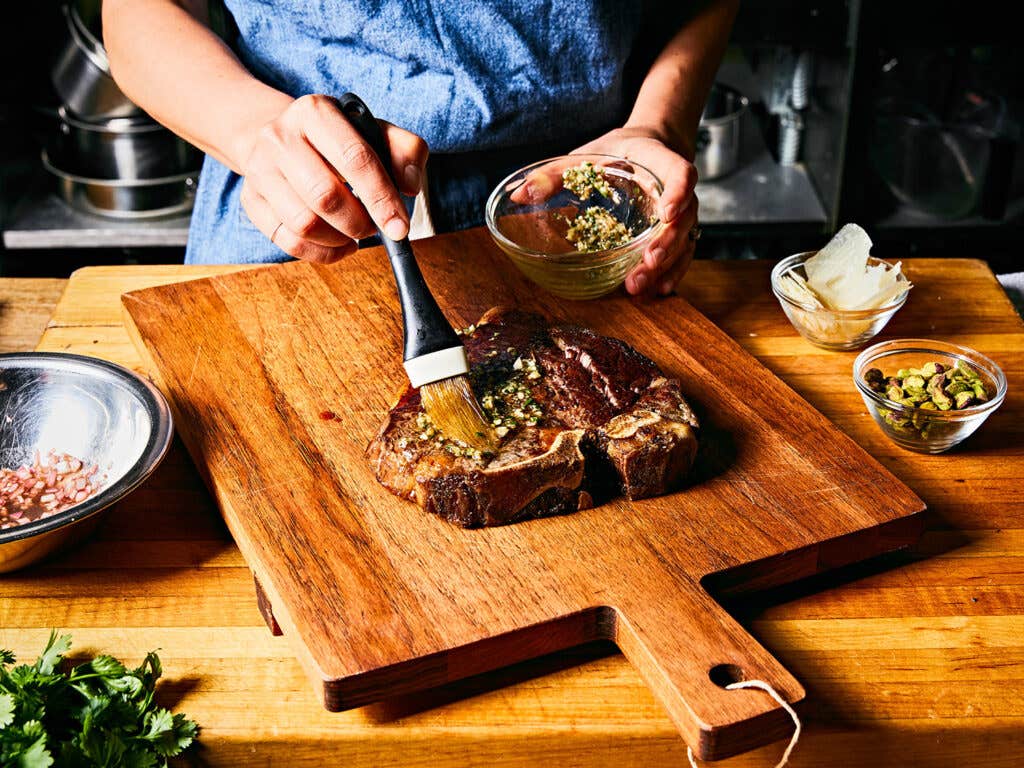
Season in Layers
Since there aren’t many seasonings to fuss with in this dish, the details of how and when you add each of them are what tend to matter more. Because solid particles like those from the garlic and rosemary would burn in the skillet during the searing process, you want to reserve them for brushing on the hot surface of the meat after it comes out of the pan. (This still allows the garlic and rosemary to be heated slightly, releasing their aromas and somewhat but not excessively taming their raw intensity.) Before cooking, season the meat heavily with a medium-grain salt such as kosher salt before setting it out to come to room temperature, then brush it lightly with some of the oil from the anchovies to begin imparting the fish’s umami flavors.
Ingredients
For the steak:
- 1 bone-in porterhouse steak (1¼ lb.), preferably aged
- 1 tsp. kosher salt, plus more as needed
- ¼ tsp. freshly ground black pepper
- 2 oil-packed anchovy fillets, finely minced, plus ½ tsp. oil from the jar
- 3 Tbsp. extra-virgin olive oil
- 2 large garlic cloves, grated on a microplane (1¼ tsp.)
- 1 tsp. very finely chopped fresh rosemary
For the salad:
- 2 Tbsp. minced shallot (from ½ shallot)
- 2 Tbsp. plus 1 tsp. red wine vinegar
- Kosher salt
- 2 Tbsp. extra-virgin olive oil
- 4 cups loosely packed watercress (2½ oz.)
- Freshly ground pepper
- 2 Tbsp. raw or roasted, unsalted pistachios
- Leaves from a few sprigs flat-leaf parsley (optional)
Instructions
Step 1
Step 2
Step 3
Step 4
Step 5
Step 6
Step 7
Step 8
- Pat the steak dry with paper towels if needed. Season all over with the salt and pepper, rubbing to adhere. Set aside to let come to room temperature, at least 20 minutes.
- Meanwhile, in a medium bowl, add the anchovies and their oil, 2 tablespoons of the olive oil, garlic, and rosemary. Using a fork, stir well to combine.
- In a separate medium bowl (large enough to fit the watercress later), add the shallot, vinegar, and a pinch of salt. Stir briefly and set aside to rest.
- When the steak is at room temperature, set a large cast-iron or stainless steel skillet over medium heat. Brush the steak with a little oil from the anchovy mixture (avoid any solids at this point). Add 1 tablespoon olive oil to the skillet and raise the heat to medium-high. When the oil begins to smoke, carefully add the steak and cook, pressing down on the bone with tongs as needed to help the steak remain in contact with the skillet but otherwise not disturbing, until a very dark crust forms on the bottom, about 6 minutes. Using the tongs, flip the steak and cook until the remaining side is deeply browned, about 3 minutes. (If the steak didn’t fully brown in some areas, you can baste it with some of the hot fat from the skillet: Holding the handle with a kitchen towel, tilt the skillet to pool the juices, then use a large kitchen spoon to spoon the juices over any patches that need additional browning; repeat several times.) Using the tongs, lift and turn the steak to press its fatty sides up against the surface of the skillet until browned, about 1 minute more.
- Transfer the steak to a cutting board and immediately brush all over with the remaining anchovy mixture. Set aside to rest for 6 to 8 minutes.
- Meanwhile, in the bowl with the shallot mixture, whisk in the olive oil. Add the watercress and a pinch each of salt and pepper; toss gently and thoroughly to coat.
- Using a medium, sharp chef’s knife, cut the meat away from the bone and into two pieces by following the lines of the center bone. Separate both pieces slightly from the bone, reserving the bone. Starting from one end, slice each piece of meat about ½ inch thick against the grain, keeping it in the shape of the original steak.
- Transfer the salad to a serving platter, positioning it slightly to one side. Add the steak bone to the other side of the platter and nestle the two pieces of meat back into the bone, overlapping slightly with the salad. Drizzle the meat with any remaining juices from the cutting board. Top the salad with the pistachios and parsley leaves (if using); serve immediately.
Keep Reading
Continue to Next Story
